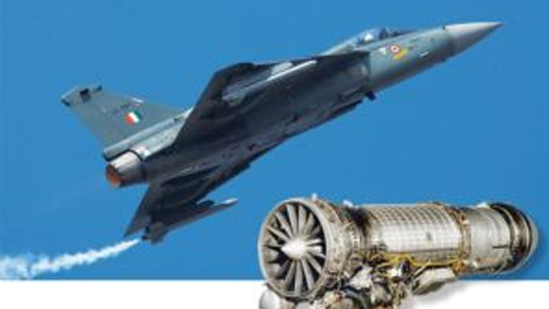In a significant development for India’s defense sector, General Electric (GE) is set to deliver the first of the 99 GE-404 engines for the Tejas Mark 1A fighter jets by the end of this month. The contract, valued at USD 716 million, was signed in 2021, but delivery has been delayed by two years, causing concerns within the Indian Air Force (IAF) regarding the timely induction of the Tejas Mark 1A fleet. However, with the engines now on the test-bed and ready for dispatch, there is renewed momentum in the program. Following this initial delivery, 12 engines are scheduled to arrive in 2025, with GE expected to supply 20 engines annually until the contract is completed.
The GE-404 engine is a crucial component of the Tejas Mark 1A, India’s indigenous light combat aircraft (LCA). The delay in deliveries has directly impacted the production schedule of these jets, leading to frustration within the IAF. The Defence Ministry, led by Defence Secretary R.K. Singh, has taken note of these concerns, and efforts are underway to expedite the production and delivery process. Given India’s ambitious plans to modernize its air force, the timely completion of this contract is essential for strengthening the IAF’s operational capabilities.
Meanwhile, in a parallel development, Hindustan Aeronautics Limited (HAL) is working closely with GE for the indigenous production of the more powerful GE-414 engine. This engine is intended to power India’s future Advanced Medium Combat Aircraft (AMCA), a fifth-generation fighter jet being developed by the Defence Research and Development Organisation (DRDO). Under the transfer of technology (ToT) agreement facilitated by the India-US Initiative on Critical and Emerging Technologies (iCET), GE will assist India in setting up a domestic production line for the GE-414 engine. This is a significant step towards self-reliance in defense manufacturing, aligning with the Aatmanirbhar Bharat initiative.
Amid concerns over delays in the supply of 83 LCA MK 1A aircraft, the IAF Chief has voiced frustration, prompting the Defence Ministry to set up a dedicated committee to work out a business model for the AMCA program. Notably, this committee will not focus on the technical aspects of the aircraft but will instead explore ways to involve the private sector in the manufacturing process. This move signals India’s intent to move beyond HAL and develop a competitive defense production ecosystem that includes private companies, ensuring faster and more efficient production of fighter jets for national security.
At the same time, India is considering multiple options for acquiring fifth-generation fighters. The United States has reportedly offered India the F-35 fighter jets, a proven fifth-generation aircraft with advanced stealth and combat capabilities. However, India is also exploring a French proposal that involves manufacturing Rafale fighters and the M-88 engine in India under the Aatmanirbhar Bharat initiative. The decision will likely depend on India’s long-term strategic and technological goals, as well as its ability to develop indigenous capabilities while balancing international partnerships.
With the GE-404 engine deliveries finally moving forward, India’s Tejas Mark 1A program is expected to gain momentum, while the collaboration on GE-414 engines marks a major milestone in the country’s journey towards developing its own next-generation combat aircraft. The upcoming months will be crucial in determining the pace of India’s fighter jet production, ensuring that the IAF remains well-equipped to meet future challenges.

